7 Ways Employees Learn Company Culture

Every company has its own culture, which influences how people interact, how they work, and what values they hold. When a new employee starts working for a company, he must be briefed about the organization’s policies.
It offers him a sense of direction and eliminates the possibility of becoming lost. Just like the descriptive essay guidelines are essential to crafting a meaningful essay. Both employees and employers can benefit from such tips.
7 Ways Employees Learn Culture in an Organization
Below are the 7 most effective ways employees get a chance to learn about the culture in an organization:
1. Through Active Interactions
Interacting with coworkers or managerial authority reveals a lot about an organization’s culture. People have a wide range of personalities and abilities. Some may have a cooperative mentality, while others may not be supportive. You will have the opportunity to learn about the company’s culture through experiences as a newly hired employee.
Understanding the values and history of an organization might be extremely challenging at first. You may be concerned about being misled or not being given enough opportunities to demonstrate your credibility. Gaining trust and establishing your position in a company takes time. A healthy working environment is critical for achieving more productive results and achieving goals.
2. Management of Activities
Various entertaining activities, such as sporting events, seminars, and contests, are organized by several groups. It not only boosts employees’ morale but also helps them feel like valuable contributors to the firm. Freshmen benefit from such events since they have the opportunity to collaborate with senior coworkers and gain new skills. The training can help your career grow and learn about a company’s culture so you can modify your behavior properly.
Any unfavorable incident or a quick mishap can demotivate certain personnel. Maintaining a peaceful and well-balanced culture can help to avoid such situations. To achieve these objectives, inclusive techniques should be used.
3. Language and Shared Stories
Sharing stories or major events from your company’s history with your employees is one of the most effective ways to promote your company’s culture to them. They develop an emotional attachment to the organization and are encouraged to take ownership of their work. Various languages are employed, some of which are specific to a place or community.
Short phrases that are exclusive to a certain work culture are also employed. For example, hotels utilize abbreviations or short phrases to denote things like “DND,” which stands for “Do Not Disturb,” and so on. These small gestures and clever tricks might help you save a lot of time and increase your productivity.
4. Ceremonies and Rituals
The company has several core procedures that are either formal or informal. The way a company regards its employees and their needs have a big impact on how the workplace culture develops. If a corporation has a significant event linked with it that is commemorated regularly, it defines the organization’s values and rituals.
Some firms mark key days, such as women’s day, by awarding female employees to recognize their commitment and efforts to keep them happy and engaged. This type of setup plays a significant role in gaining employee trust and support.
5. Rewards Given
Employees are given different rewards depending on the degree of their employment and the obligations that come with it. They can take the shape of a bonus or a prize to commemorate the awarding of a contract or great achievement. It promotes a positive work environment that encourages individuals to give their all. A few high-performing employees are also given certain perks to reward them and encourage others to work harder.
It fosters an ideal culture in which there are few possibilities of corruption. Employees who are happy perform their duties more seriously and are encouraged to reach their full potential.
6. Symbols Used
Symbols are an excellent technique for representing a culture that does not necessitate a lot of verbal communication. Many silent messages, like logos, office labels, titles associated with designations, and so on, can be employed successfully to indicate the culture. When an employee is brought in for an interview for the first time, he witnesses such representations to assess the company’s standard.
The well-designed logos that distinguish your brand give off a professional vibe. Some businesses also provide customized symbols to different departments based on the task they do. Such innovative ideas can significantly improve the company’s standing.
7. Leadership
Whatever the industry or type of work, leadership is a critical component in describing a company’s culture. The company values can be seriously damaged if the leading bodies do not maintain an engaging environment that embraces each employee’s contribution.
The way employees from different departments engage with one another, as well as the mediums they use, all have an impact on the culture. Because culture is important to business, managers should do everything they can to establish a harmonious and helpful environment. Everyone feels special and appreciated when there is a well-maintained culture.
Conclusion
The culture of a company is shaped by the leading bodies and employees. It is a collaborative effort that helps to create a healthy working environment that promotes growth and motivation. Language, rituals, increments, and other variables all contribute to the formation of a culture. Maintaining a culture that is aligned with the company’s values is crucial to meeting the objectives.
Discover more about outsourcing and
how you can maximize it for your
business success!
Get a copy of our E-book: Guide to Outsourcing.




